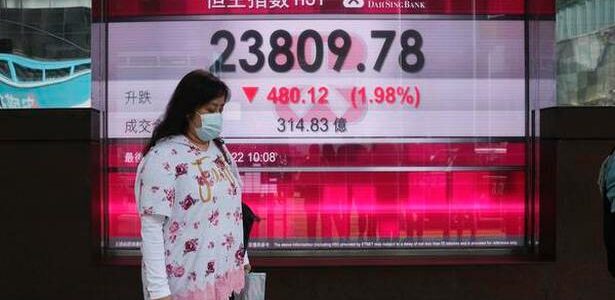
Explained | Why stock markets witness significant fall in recent times
Stock prices and bond yields are inversely related. As bond yields rise, stock prices fall; and as bond yields fall, stock prices rise
The story so far: Stock markets across the world are witnessing a significant fall as it becomes increasingly clear that the US Federal Reserve will raise interest rates to contain rising prices. US Federal Reserve chairman Jay Powell on Wednesday struck a hawkish tone by stating that the American central bank will begin raising interest rates as soon as March this year. Stocks have been falling for a while now with the S&P 500 down almost 10% from its all-time high hit earlier this month and India’s Nifty 50 index down about 7% from its most recent high. Bond yields, on the other hand, have risen as speculators expect central banks to reduce the liquidity support that they offer to bond markets.
What do rising interest rates mean?
Central banks such as the US Federal Reserve, the European Central Bank, the Reserve Bank of India and others constantly influence interest rates by regulating money supply. When central banks are willing to flood the credit market with plenty of money, this causes the overall demand for credit instruments like bonds (which represent a claim over future cash flows) to rise as speculators bid up the price of bonds in the expectation that central banks will lap up these bonds eventually. The rise in the price of bonds causes their yields (or interest rates) to fall. In Europe, for instance, speculators were willing to pay more money than the future cash flows that they were entitled to receive from bonds, thus pushing yields into negative territory; these speculators expected the ECB to buy up these bonds. The US Federal Reserve has also been a major determinant of interest rates in the American mortgage market through its bond purchase programme named quantitative easing. When central banks, on the other hand, contract money supply or slow down the pace at which they create fresh money, this can lead to a fall in liquidity in the credit market and consequently lead to a drop in the speculative demand for bonds and other credit products like short term loans. As a result, the prices of these instruments drop and their yields (or interest rates) rise.
Why are stocks falling as interest rates rise?
Stock prices and bond yields are inversely related. As bond yields rise, stock prices fall; and as bond yields fall, stock prices rise. This is because, when interest rates (or yields) on safer investments like bonds fall for instance, more investors would be willing to dabble in stocks. For example, if interest rates on bonds were to drop from 5% to 1%, this would persuade investors requiring a minimum return on investment of anything between 1% to 5% to desert bonds and move into stocks, in which they hope to make higher returns by assuming greater risk. This process basically leads to future cash flows from stocks being discounted at lower rates than before, thus causing stock prices to rise. Conversely, when interest rates rise, this can cause future cash flows from stocks to be discounted at higher rates, causing stock prices to fall as a result. So, it is possible that the recent fall in stocks is due to speculators pricing in higher interest rates.
What lies ahead?
If central banks were to withdraw the support they have offered to credit markets and allow interest rates to rise, this should mean that stock prices will fall. However, it should be noted that markets can be overvalued or undervalued when compared to their fundamentals for long stretches of time. Further, there are other variables such as earnings expectations that influence stock prices. Stocks may also consolidate at high prices for a long time until earnings catch up to justify the high prices. So, at the end of the day, the technical forces of demand and supply may determine trends in stock prices in the short-run. At the moment, it seems like the S&P 500 has found some support at the 4,300 level while the Nifty could find further support at 16,600.
Rising interest rates can also wreak havoc on the economy as there could be the need for widespread reallocation of goods and services across the economy to adjust to higher interest rates. For example, business projects that seemed to make sense when interest rates were low and liquidity was abundant may need to be abandoned in favour of other, more viable projects.
Source: Read Full Article